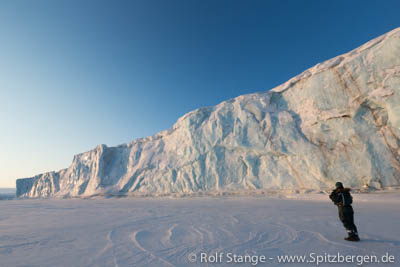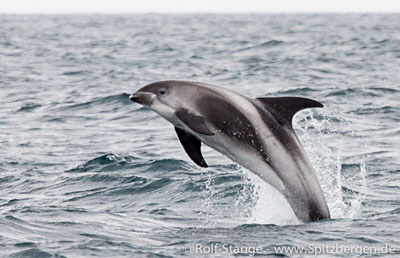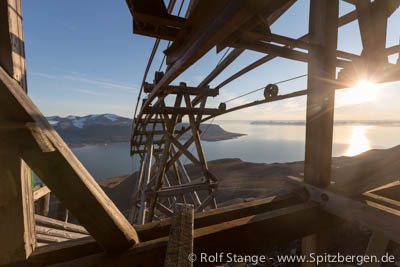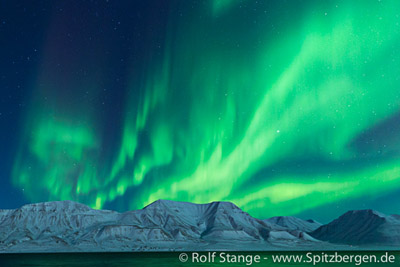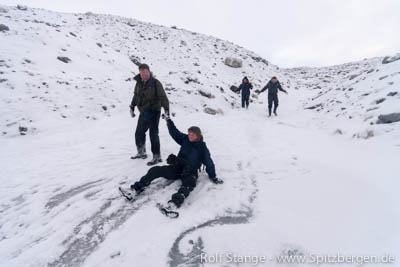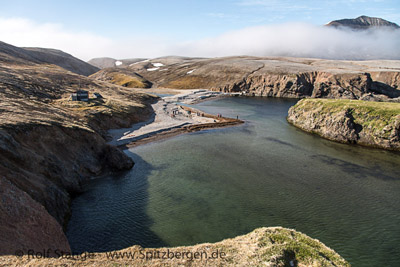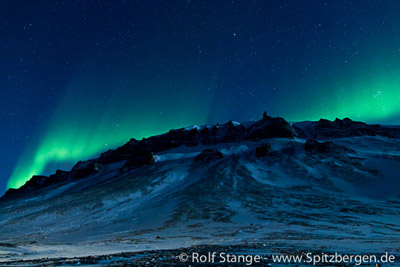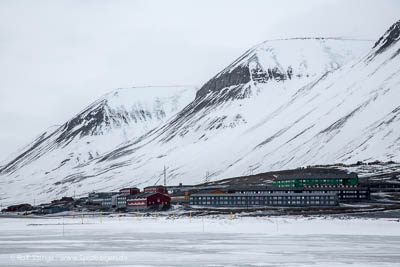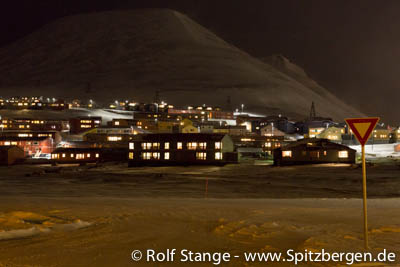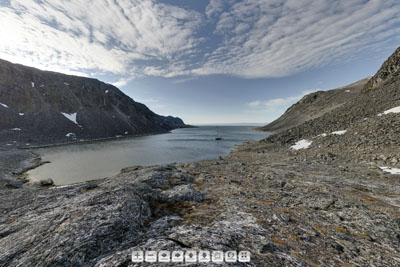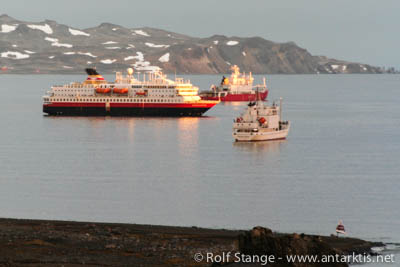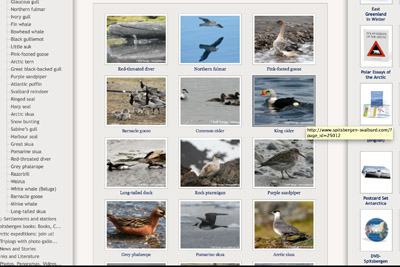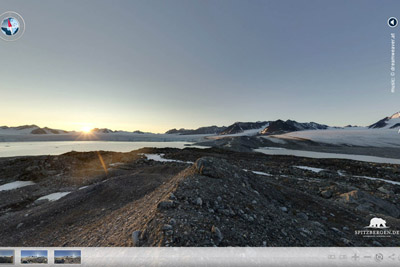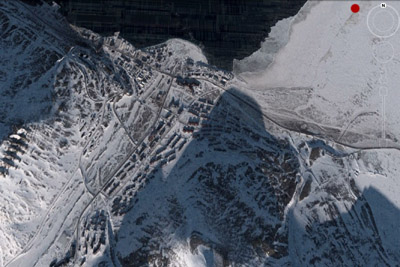-
current
recommendations- Liefdefjord
New page dedicated to one of Spitsbergen's most beautiful fjords. Background information and many photos.
- New Spitsbergen guidebook
The new edition of my Spitsbergen guidebook is out and available now!
- Liefdefjord
New page dedicated to one of Spitsbergen's most beautiful fjords. Background information and many photos.
Page Structure
-
Spitsbergen-News
- Select Month
- May 2025
- April 2025
- March 2025
- February 2025
- January 2025
- December 2024
- November 2024
- October 2024
- September 2024
- August 2024
- July 2024
- June 2024
- May 2024
- April 2024
- March 2024
- February 2024
- January 2024
- December 2023
- November 2023
- October 2023
- September 2023
- August 2023
- July 2023
- June 2023
- May 2023
- April 2023
- March 2023
- February 2023
- January 2023
- December 2022
- November 2022
- October 2022
- September 2022
- August 2022
- July 2022
- June 2022
- May 2022
- April 2022
- March 2022
- February 2022
- January 2022
- December 2021
- November 2021
- October 2021
- September 2021
- August 2021
- July 2021
- June 2021
- May 2021
- April 2021
- March 2021
- February 2021
- January 2021
- December 2020
- November 2020
- October 2020
- September 2020
- August 2020
- July 2020
- June 2020
- May 2020
- April 2020
- March 2020
- February 2020
- January 2020
- December 2019
- November 2019
- October 2019
- September 2019
- August 2019
- July 2019
- June 2019
- May 2019
- April 2019
- March 2019
- February 2019
- January 2019
- December 2018
- November 2018
- October 2018
- September 2018
- August 2018
- July 2018
- June 2018
- May 2018
- April 2018
- March 2018
- February 2018
- January 2018
- December 2017
- November 2017
- October 2017
- September 2017
- August 2017
- July 2017
- June 2017
- May 2017
- April 2017
- March 2017
- February 2017
- January 2017
- December 2016
- November 2016
- October 2016
- September 2016
- August 2016
- July 2016
- June 2016
- May 2016
- April 2016
- March 2016
- February 2016
- January 2016
- December 2015
- November 2015
- October 2015
- September 2015
- August 2015
- July 2015
- June 2015
- May 2015
- April 2015
- March 2015
- February 2015
- January 2015
- December 2014
- November 2014
- October 2014
- September 2014
- August 2014
- July 2014
- June 2014
- May 2014
- April 2014
- March 2014
- February 2014
- January 2014
- December 2013
- November 2013
- October 2013
- September 2013
- August 2013
- July 2013
- June 2013
- May 2013
- April 2013
- March 2013
- February 2013
- January 2013
- December 2012
- November 2012
- October 2012
- September 2012
- August 2012
- July 2012
- June 2012
- May 2012
- April 2012
- March 2012
- February 2012
- January 2012
- December 2011
- November 2011
- October 2011
- September 2011
- August 2011
- May 2011
- April 2011
- March 2011
- February 2011
- January 2011
- December 2010
- November 2010
- September 2010
- August 2010
- July 2010
- June 2010
- May 2010
- April 2010
- March 2010
- February 2010
- November 2009
- October 2009
- August 2009
- July 2009
- June 2009
- May 2009
- April 2009
- March 2009
- February 2009
- January 2009
- December 2008
- November 2008
- October 2008
- August 2008
- July 2008
- June 2008
- May 2008
- April 2008
- March 2008
- February 2008
- April 2000
- Select Month
-
weather information
-
Newsletter

| Guidebook: Spitsbergen-Svalbard |
Home →
Yearly Archives: 2014 − News & Stories
Photo trip: arctic winter, Spitsbergen 2015
One intense week of arctic winter impressions in Spitsbergen in early March 2015: polar landscapes in the quickly changing light of the low sun on the boundary between polar night and midnight sun, when the light is changing from day to day. That is the purpose of our new photo trip into the arctic winter, for the first time im March 2015.
Using motor sledges (snow scooters) as effective means of transportation, we can get to various places in different areas to maximize the variation of our landscape experience and photo settings. The key is to have enough time and a small group to be flexible and make the best of whatever situation occurs. Alexander Lembke as photographic leader, Doreen Lampe as motor sledge expert and Rolf Stange will make sure we maximize our opportunities during this week.
This tour will be German speaking. Hence, the site about this tour is also German. For further information, please click here.
Foto trip in the arctic winter: glacier front frozen in fjord ice.
Site of the week: White-beaked dolphin
The new site of the week at spitsbergen-svalbard.com is a recently created site about the White-beaked dolphin. Dolphins are not exactly what you intuitively expect in the arctic, so it is quite surprising to learn of many there actually are. But not on the coastal waters and fjords of Spitsbergen, rather in the open Barents Sea. In recent years, I have regularly done the crossing from Norway to Bear Island and Spitsbergen in the beginning of the arctic shipping boat season. The abundance of whales and dolphins in the Barents Sea has always amazed me. White-beaked dolphins are the northernmost representatives of the dolphin family.
Click here to get to the new site of the week.
White-beaked dolphin in the Barents Sea.
Coal mining not profitable: Store Norske cuts 100 jobs
The Norwegian coal mining company Store Norske Spitsbergen Kulkompani (SNSK) will reduce the number of employees as a reaction to their loss-making mining activity in Spitsbergen. Rapidly falling world market prices for coal encountered rising costs for mining in the marginal parts of the old mine Svea Nord and for the exploitation of the new mine at Lunckefjellet. At an average coal price of 75$ per ton the company currently looses 10$ with every ton being extracted (see also Spitsbergen-Svalbard.com news Coal mining in Spitsbergen under pressure from November 2014).
Under high pressure Store Norske evaluates several possibilities of reacting to this economic crisis in order to save coal mining on Spitsbergen for the near future. It has already been decided that ca. 100 of the 340 jobs at Store Norske will be cut as soon as possible. The decision was published in the end of November and in the meantime the first group of 30 employees has been informed, that their contracts will run out. It is estimated, that all in all ca. 600 jobs on Spitsbergen are directly or indirectly depending on Norwegian mining. In addition to the employees of Store Norske these figures mainly include jobs at suppliers and service companies, in the trading sector and at public servicers, as school and kindergarten. If the Norwegians had to suspend coal mining completely, this would have a very strong impact on the relatively small community of only ca. 2000 inhabitants in the city of Longyearbyen. In 2013 Store Norske did already cut 80 jobs, one possible reason for the moderate population decline in Longyearbyen after a longer period of growth. A significant expansion of the two other strong economic sectors, tourism and research, as a compensation for a possible suspension of coal mining can not be expected in the short term.
Under these circumstances it is not only the management of Store Norske but also the local government in Longyearbyen which is concerned and intensively occupied with finding solutions to ensure coal mining on Spitsbergen. Therefore, members of Store Norske as well as the mayor of Longyearbyen, Christin Kristoffersen, recently traveled to Oslo for negotiations with bankers, the Norwegian government and the parliament.
Old coal mine: has seen better days in the past (Hiorthhamn-mine opposite Longyearbyen).
Source: Svalbardposten
Site of the week: northern lights
The new site of the week at spitsbergen-svalbard.com is about northern lights (aurora borealis). It fits well as a follow-up to midnight sun and polar night, which was the last week’s site.
The northern lights page has been created recently to offer some background, photos and some basic photographic hints for northern light photography. Click here to get to the northern lights page.
Northern light above Adventfjord.
November wet and warm
The number 52 is storytelling. This is the amount of precipitation (mm per months) measured in November in LOngyearbyen, in contrast to a normal monthly average of 15 mm. This makes November 2014 the wettest November in Longyearbyen ever since meteorological recordings were started in the early 20th century. Until now, the record was held by November 1993 with 46.5 mm.
Ny Ålesund received an amazing 73.2 mm, but this was not enough to beat the record from November 1993, which is an amazing 230.3 mm.
Also the temperatures were above average, in Longyearbyen -6.4 degrees centigrade compared to an average of -10.3. The reason for the warm and wet weather is the high frequency of low pressures coming from the west with warm and moist air. Normally, there is a stronger eastern influence with colder and drier air in November.
The weather made itself felt in daily life: A few snow mobiles are now frozen solid on a ice-covered ground, and it may take the next real thaw to make them move again. This may or may not happen before May. And the hospital certainly had an above average number of patients who had slipped on clear ice. It is recommended to use spikes and light or a reflector if you walk around in Longyearbyen in these conditions.
Clear ice under a thin snow cover made walking in Longyearbyen dangerous at times in November.
Source: Svalbardposten
Bear Island: Boundary stone in a boundless sea
A virtual journey to a fascinating arctic island, as experienced and written by Rolf, published on the blog toffeefee or The World according to Dina. Enjoy!
Bear Island: Boundary stone in a boundless sea.
Site of the week: midnight sun and polar night
The site of the week at spitsbergen-svalbard.com is a completely new page: midnight sun and polar night. Everybody knows that the sun does not shine any more in the arctic since late October. But what exactly is the difference between “dark time” and “polar night”? How is the course of the “light seasons” over the year? This is what the new page midnight sun and polar night is about.
Site of the week at spitsbergen-svalbard.com: midnight sun and polar night.
Decline in polar bear population in the southern Beaufort Sea
In November U.S and Canadian scientists published the results of a 10-year study period focusing on the polar bear population dynamics in the southern Beaufort Sea. The results are alarming: During the period of investigation from 2001 to 2010 the number of polar bears in this region dropped by about 40%.
The Beaufort Sea is part of the Arctic Ocean and is located north of Alaska and the Canadian territories Yukon and Northwest Territories. The study was motivated by the fact that a spatial and temporal decline of summer sea ice in the southern Beaufort Sea was noticed over the years. Earlier projections of a decline in polar bear population due to these unfavourable ice conditions had already contributed to the U.S. government’s decision in 2008 to regard the polar bear as a threatened species. Now the results of the present study have confirmed these earlier projections.
Especially in the years 2004 to 2006 a low survival rate led to a 25-50% decline in polar bear population in this region. For very young individuals it was almost impossible to survive during this period, as out of 80 cubs observed in Alaska from 2004 to 2007 only 2 survivors could be confirmed. The reason for the low survival rate is seen in a limited access to seals, the polar bears favorite prey, caused by the retreating sea ice. In addition the seal abundance itself decreased in the same period. In 2007 the survival rate of adults and cubs began to improve again so that the population could at least be stabilized with ca. 900 bears towards the end of the survey. However, among subadults, those who were recently separated from their mothers, survival declined throughout the entire period.
So, as in 2004 still a sufficient number of 1600 individuals could be observed, the population finally dropped to only 900 bears in 2010.
Polar bear on land, without any ice nearby, and obviously not in good shape.
Source: Ecological Applications
Coal mining in Spitsbergen under pressure
The Norwegian mining company Store Norske Spitsbergen Kullkompani is set under pressure by the permanently low world market price for coal. Since 2012 the Norwegian coal mining in Spitsbergen is a loss-making business. Falling prices encountered inferior qualities and rising costs in the main mine Svea Nord near Sveagruva. Here mining is coming towards an end and is now run in the marginal parts of the coal seam (see also Spitsbergen-Svalbard.com news Store Norske: black gold yields red numbers from May 2013).
The new mine at Lunckefjellet, opened officially in February 2014, was supposed to produce relief. But at a current average coal price of 75$ per ton Lunckefjellet is not profitable either. The price is at least 10$ per ton less than Store Norske needs to avoid operating at a loss. When the new mine was planned, the company even calculated with a price 40% above the current level. As the total amount of coal expected at Lunckefjellet is relatively low, compared to Svea Nord, the new mine will only be driven until 2018 and it is not expected that the coal price will rise in the next few years.
Recently Store Norske´s management described the situation as serious for the first time. In the long run the company will react with cost reductions which also means a reduction of staff. In the short run it was necessary to hire 30 additional miners to extract coal from marginal parts of the old mine Svea Nord, meaning an interim increase of operating costs. Facing the current conditions it is getting questionable if coal mining in Spitsbergen will have a future at all. New projects like Ispallen and Operafjellet are challenged.
Both Store Norske, which is 99.9% owned by the Norwegian state, and the local government in Longyearbyen are aware of the economic and social relevance of the company for the small community of only 2000 inhabitants. If coal mining in Spitsbergen will be reduced or even suspended it will affect not only those who work for the mining company. A large number of other jobs in Longyearbyen are directly or partly connected to the mining business.
Currently, Store Norske is in a dialogue with their employees, the Norwegian state and the bankers to ensure further operation in 2015.
Sveagruva in Van Mijenfjord: the current centre of coal mining in Spitsbergen.
Source: Svalbardposten
Punchfest in Longyearbyen
Hard to believe, but it has happened: in the late evening on Monday, a large number of young men got engaged in a robust fight in a bar in Longyearbyen. The service personnel of the SvalBar did not have any choice but to ring the police. In the past, the SvalBar used to advertise with a slogan that only those who really deserve it would be kicked out. There are obviously some more people who have joined this doubtful club now.
For reasons not yet known, two groups of young men started to fight so vigorously that the staff had to call the police to stop the punchfest. One man had to go to hospital. The exact number of persons involved is so far unknown. The police is investigating.
As recently as last week, a man got a fine of 8000 Norwegian Kroner because of aggressive behaviour in one of Longyearbyen’s pubs.
Not always as peaceful as it should be: the polar night in Longyearbyen
Source: Sysselmannen
Webpage of the week: Panoramas northwest Spitsbergen
More or less weekly, we have a new webpage designated as “webpage of the week” to show hidden treasures within spitsbergen-svalbard.com, which are likely to escape from your attention otherwise. These are new or revised sites, absolutely worth seeing. This week’s page guides you to a number of 360 degree panoramas from northwestern Spitsbergen, including well-known places such as Smeerenburg on Amsterdamøya, Virgohamna on Danskøya or Gravneset in Magdalenefjord, but also less well known sites, for example Kobbefjord or Bjørnhamna. And, of course, all these panoramas come complete with a short narration of the story that is to tell – almost as good as being there! The panoramas were taken in all kinds of weather and light, from sun to rain, that is just how the area is with its quickly shifting weather. Remember, the open north Atlantic is just around the corner.
Some more panoramas from Raudfjord will complete the page over the next couple of days, but that is of course not the end of the story. More panorama images will be shot over the years to come, that is for sure. And now … enjoy turning the images!
Panorama from Kobbefjord: only one of many panoramas from northwestern Spitsbergen.
Polar Code: IMO regulations for shipping in polar waters
After several years of negotiations the IMO (International Maritime Organization), the United Nations shipping organization, completed a mandatory international code that regulates shipping in Arctic and Antarctic waters. The so-called Polar Code is supposed to improve the safety of shipping and the protection of the environment in the polar regions.
The Polar Code is a set of regulations concerning ship design, construction and equipment, operational and training matters, search and rescue and the environment in the polar regions. Environmental protection regulations include for example the prevention of pollution by prohibiting any discharge into the sea of oil, noxious liquid substances, sewage and garbage. A general prohibition of heavy fuel oil as cargo or fuel, as demanded by environmental organizations, could not be implemented. A heavy fuel oil ban already exists in the Antarctic since August 2011 and was implemented in several steps in large parts of Spitsbergen.
The geographical boundaries in which the Polar Code will be valid, include the entire Antarctic waters south of 60º S and the Arctic waters north of 60º N with some modifications in the North Atlantic: Included is an area south of Greenland. Excluded are, in the influence zone of the North Atlantic Current, the waters around Iceland, Norway and the Russian Kola Peninsula including the route to Arkhangelsk.
The Polar Code is built on two older existing agreements of the IMO: The International Convention for the Safety of Life at Sea (SOLAS) regulates safety matters and the International Convention for the Prevention of Pollution from Ships (MARPOL) regulates environmental protection matters in maritime shipping. In addition to these general agreements the IMO developed special guidelines in 2002 and 2009 for the polar regions which, however, were not binding. The new Polar Code will now for the first time establish a mandatory, international set of regulations for ships operating in Arctic and Antarctic waters.
The implementation of a binding agreement was initiated by the Arctic states USA, Norway and Denmark (Greenland). The negotiation process took many years and was finally delayed, as the differing interests of the United Nations shipping states had to be equalized. Environmental organizations criticize the delay and are currently pointing at deficits concerning environmental protection matters. On the other side there are still objections of some states being involved into the process. Especially Russia sees the Polar Code as a threat to its interests in the Arctic. Currently Russia for example gains profit from the increasing traffic on the Northern Sea Route.
According to the IMO´s timetable the Polar Code can be adopted at a meeting in May 2015 and then, after being ratified by the member states, finally enter into force in 2017.
See also Spitsbergen-Svalbard.com news IMO: polar code not before 2015 from March 2012.
Cruise ship, expedition ship and governmental icebreaker in Antarctica: the IMO Polar Code will cover all of them.
Source: IMO, Sjøfartsdirektoratet
Spitsbergen, Antarctica
The polar night has brought the usual mixture of cold, wind, snow, darkness and the Dark Season Blues Festival to Spitsbergen. The Blues Festival was last weekend’s programme, both locals and tourists were enthusiastic – as usual. The Dark Season Blues Festival has built up a good reputation far beyond Longyearbyen and Norway, attracting international stars, guests and attention.
Today (Tuesday, 04 November), the largest exercise of emergency services is going on that Spitsbergen has ever seen. Several hundred relief units and persons acting as injured people are seemingly turning Longyearbyen into a place struck by a major disaster. This is exactly what they want to be prepared for, just in case. You never know. It seems to be a pretty safe place, but things can always happen.
Comparatively calm times here in the website-publishing- and bookwriting- workshop at spitsbergen-svalbard.com. The polar night has closed the curtain for major activities in the far north, resulting in an unusual amount of time to push on with projects that have been waiting for far too long already. There has been so much traveling in the last years and other things that have kept me busy, but now is the time to get going with projects like the island info pages and the panorama sides on spitsbergen-svalbard.com, which are undergoing improvements and amendments. And I had almost forgotten that the arctic wildlife species did not yet have their individual pages in English – embarrassing, really! But now they are there, several dozen new individual pages.
As an author, I am enjoying the opportunity to get going with several projects. There will be new books, that is for sure. It will still take some time, but I am getting on with it. More about it when I am getting there.
Dozens of new English pages about arctic wildlife species are amongst the recent results of work at spitsbergen-svalbard.com
Beginning of the polar night, Krossfjord panorama pages
The polar night has begun in Spitsbergen some days ago, and it won’t be before the second half of February that the sun will be visible again above the horizon. In the darkest time, from mid December to early January, it will be dark 24/7. Only stars, moon and northern lights will cast some bleak light over the snow-covered landscape when the sky is clear.
A good time to sort photos and take care of the website. Krossfjord has now got the site it deserves, being one of Spitsbergen’s biggest and most beautiful fjords. A map makes it easy to navigate through several sub-pages that have got panorama series and virtual tours of a number of places in Krossfjord, of course including some background information.
One of many new panoramas from Krossfjord.
Polar bear in Longyearbyen, final act
The polar bear in Longyearbyen (see previous posts) is not in Longyearbyen anymore. Today (Thursday, 16 October) at 12.45 hours, it was sedated and then flown out to a remote part of Svalbard. Before the polar bear actually fell asleep, it still walked for about 3 kilometres from the shore of Adventfjord, where it had been lying for a while, to the old northern light observatory (at the old runway) in Adventdalen. After the usual weighing, measuring and marking, it was flown northwards.
The Sysselmannen wants to get it as far away as possible, preferably to another island rather than the main island Spitsbergen. The exact place will, however, depend on the weather during the flight. The initially northerly direction may, however, point to Nordaustland as a possible new home for the bear. If it becomes similarly faithful to a smaller area there as he did near Longyearben, is something nobody can currently know, probably including the polar bear itself.
A larger number of people used the opportunity to get a glimpse of the bear in a distance of about 540 metres. For some, it was the first time to see a polar bear in the wild.
Approximate position of the polar bear near Longyearbyen when it was sedated (red dot). Image base: Google Earth.
Source: http://svalbardposten.no/index.php?page=vis_nyhet&NyhetID=5128
News-Listing live generated at 2025/May/03 at 00:10:28 Uhr (GMT+1)
